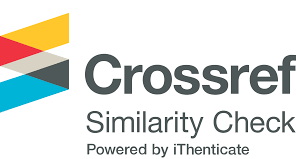Một phương pháp sinh luật mờ dựa trên cây quyết định và đại số gia tử xây dựng hệ luật mờ giải bài toán hồi quy
Abstract
Bài báo này đề xuất một phương pháp sinh luật mờ dựa trên cây quyết định và đại số gia tử để xây dựng hệ luật mờ giải bài toán hồi quy. Thuật toán được thử nghiệm trên 9 bài toán mẫu và đối sánh với các phương pháp đã có PAES_KB và HA-MG-PAES-Kmax trên các mục tiêu độ chính xác và độ phức tạp của hệ luật. Kết quả đối sánh cho thấy thuật toán đề xuất cho kết quả tốt hơn.
References
R. Alcalá, P. Ducange, F. Herrera, B. Lazzerini, and F. Marcelloni, “A multiobjective evolutionary approach to concurrently learn rule and data bases of linguistic fuzzy-rule-based systems,” IEEE Transactions on Fuzzy Systems, vol. 17, no. 5, pp. 1106–1122, Oct. 2009.
M. Antonelli, P. Ducange, B. Lazzerini, and F. Marcelloni, “Learning concurrently data and rule bases of Mamdani fuzzy rule-based systems by exploiting a novel interpretability index,” Soft Computing, vol. 15, pp. 1981–1998, 2011.
H. Ishibuchi and Y. Nojima, “Analysis of interpretability accuracy tradeoff of fuzzy systems by multi-objective fuzzy genetics-based machine learning,” International Journal of Approximate Reasoning, vol. 44, no. 1, pp. 4–31, 2007.
——, “Repeated double cross-validation for choosing a single solution in evolutionary multi-objective fuzzy classifier design,”Knowledge-BasedSystems,vol.54,pp.22–31,2013.
P. Pulkkinen and H. Koivisto, “Fuzzy classifier identification using decision tree and multiobjective evolutionary algorithms,” International Journal of Approximate Reasoning, vol. 48, no. 2, pp. 526–543, 2008.
O. Cordón, M. J. Del Jesus, and F. Herrera, “A proposal on reasoning methods in fuzzy rule-based classification systems,” International Journal of Approximate Reasoning, vol. 20, no. 1, pp. 21–45, 1999.
C. H. Nguyen, W. Pedrycz, T. L. Duong, and T. S. Tran, “A genetic design of linguistic terms for fuzzy rule based classifiers,” International Journal of Approximate Reasoning, vol. 54, no. 1, pp. 1–21, 2013.
C. H. Nguyen, V. T. Hoang, and V. L. Nguyen, “A discussion on interpretability of linguistic rule based systems and its application to solve regression problems,” Knowledge-Based Systems, vol. 88, pp. 107–133, 2015.
C. H. Nguyen, V. Hoang, T. Tran, and V. Nguyen, “LFoC Interpretability of linguistic rule based systems and its applications to solve regression problems,” International Journal of Computer Technology & Applications, vol. 8, no. 2, pp. 94–117, 2017.
F. Aghaeipoor and M. M. Javidi, “On the influence of using fuzzy extensions in linguistic fuzzy rule-based regression systems,” Applied Soft Computing, vol. 79, pp. 283–299, 2019.
C. Mencar and A. M. Fanelli, “Interpretability constraints for fuzzy information granulation,” Information Sciences, vol. 178, no. 24, pp. 4585–4618, 2008.
L. A. Zadeh, “Fuzzy sets,” Information and Control, vol. 8, no. 3, pp. 338–353, 1965.
N. M. Han, N. C. Hao et al., “An algorithm to building a fuzzy decision tree for data classification problem based on the fuzziness intervals matching,” Journal of Computer Science and Cybernetics, vol. 32, no. 4, pp. 367–380, 2016.
X. Liu, X. Feng, and W. Pedrycz, “Extraction of fuzzy rules from fuzzy decision trees: An axiomatic fuzzy sets (AFS) approach,” Data & Knowledge Engineering, vol. 84, pp. 1– 25, 2013.
N. C. Ho and W. Wechler, “Hedge algebras: An algebraic approach to structure of sets of linguistic truth values,” Fuzzy Sets and Systems, vol. 35, no. 3, pp. 281–293, 1990.
J. Han, J. Pei, and M. Kamber, Data Mining: Concepts and Techniques. Elsevier, 2011.
J. D. Knowles and D. W. Corne, “Approximating the non-dominated front using the Pareto archived evolution strategy,” Evolutionary Computation, vol. 8, pp. 149–172, 2000.



